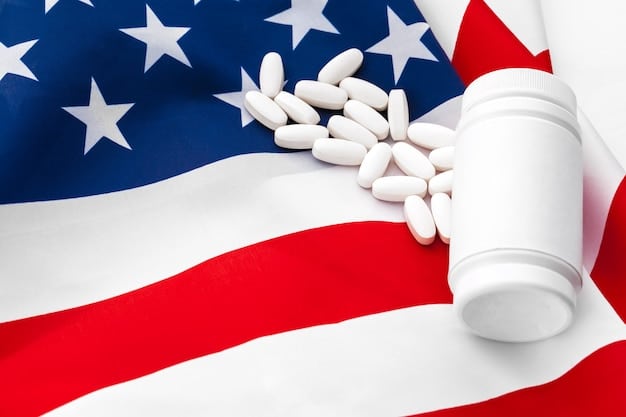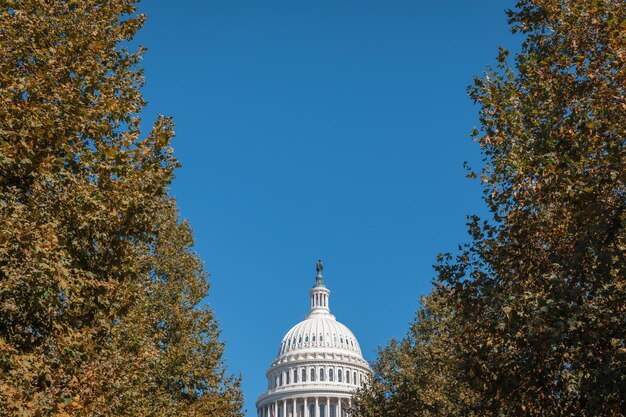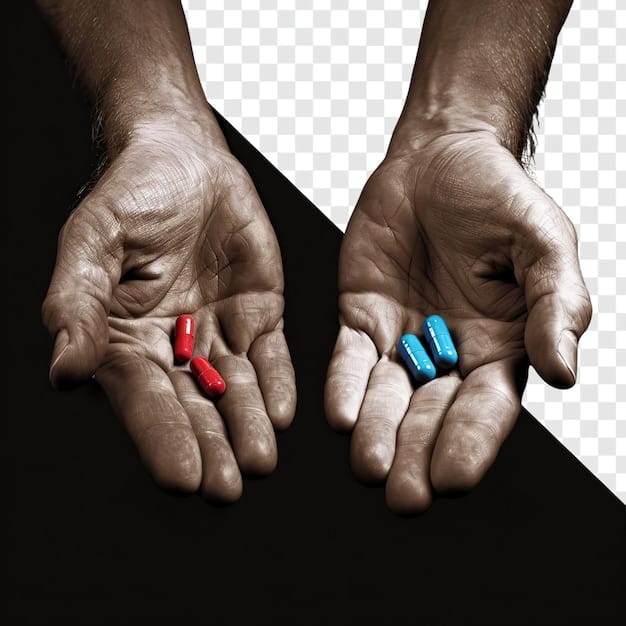How US Policy Changes Impact Pharma and Drug Prices

US policy changes significantly affect the pharmaceutical industry and drug prices through legislation, regulation, and trade agreements that can impact research and development, market competition, and ultimately, the affordability and accessibility of medications for consumers.
Understanding how US policy changes affect the pharmaceutical industry and drug prices is crucial for stakeholders, patients, and anyone interested in healthcare. These policy shifts can reshape the landscape of drug development, market access, and affordability.
Understanding the Role of US Policy in Healthcare
US policy plays a pivotal role in shaping the healthcare industry, particularly concerning pharmaceuticals. Government decisions at the federal and state levels can influence everything from research and development to drug manufacturing and pricing.
Legislative Influence on Pharma
Legislation passed by Congress can have a direct impact on the pharmaceutical industry. Laws related to drug approval processes, patent protection, and market exclusivity can encourage or discourage innovation.
- Drug Approval: Policies affecting the FDA’s drug approval timeline can accelerate or delay the availability of new medications.
- Patent Laws: Strong patent protection fosters innovation by providing drug companies with exclusive rights to their inventions.
- Market Exclusivity: Policies that grant market exclusivity can incentivize the development of drugs for rare diseases.
Understanding these legislative components is essential to grasp the dynamics that drive pharmaceutical innovation and pricing in the US.

Key Government Agencies and Their Impact
Several government agencies play a vital role in regulating and influencing the pharmaceutical industry. Each agency has specific responsibilities ranging from drug approval to price negotiation.
Food and Drug Administration (FDA)
The FDA is responsible for approving new drugs and ensuring their safety and efficacy. FDA policies impact the speed at which drugs reach the market, affecting both pharmaceutical companies and patients.
Streamlined processes can lead to quicker access to innovative treatments, while rigorous standards protect public health.
Centers for Medicare & Medicaid Services (CMS)
CMS manages Medicare and Medicaid, which are major purchasers of prescription drugs. CMS policies around drug reimbursement can significantly impact pharmaceutical company revenues.
- Negotiation Power: CMS’s ability to negotiate drug prices affects the profitability of pharmaceutical companies.
- Formulary Decisions: Decisions about which drugs are covered under Medicare and Medicaid directly influence market access.
- Reimbursement Rates: CMS sets reimbursement rates for drugs covered under its programs, affecting how much pharmaceutical companies are paid.
These agencies collectively exert considerable influence over the economic and regulatory environment of the pharmaceutical sector.
How Trade Agreements Affect Drug Prices
International trade agreements can have a profound impact on drug prices in the US. These agreements often include provisions related to intellectual property, market access, and data exclusivity.
Intellectual Property Rights
Trade agreements that strengthen intellectual property rights can extend patent protection for pharmaceutical products. This can limit competition from generic drugs and keep brand-name drug prices higher.
Conversely, agreements that weaken intellectual property rights may allow for faster entry of generic drugs, leading to lower prices
Market Access and Competition
Provisions in trade agreements that promote fair competition can encourage generic manufacturers to enter the market. Increased competition often results in lower drug prices.

Policy Changes and Pharmaceutical Innovation
US policy changes significantly impact pharmaceutical innovation. Government policies can either stimulate or hinder the development of new drugs and therapies.
Incentives for Research and Development
Tax incentives, grants, and other financial support encourage pharmaceutical companies to invest in R&D. These incentives can lead to the discovery and development of new treatments for a variety of diseases.
Policies that reduce financial risk enhance innovation and help address unmet medical needs.
Regulatory Hurdles and Approval Processes
The regulatory environment, particularly the FDA’s drug approval process, influences pharmaceutical innovation. Streamlined processes can accelerate drug development and bring new therapies to market faster.
- Expedited Review: Fast-track designations and breakthrough therapy designations can expedite the approval of drugs that address serious conditions.
- Clinical Trial Design: Policies that encourage innovative clinical trial designs can make the drug development process more efficient.
- Post-Market Surveillance: Robust post-market surveillance ensures the safety and effectiveness of approved drugs.
Thoughtful regulatory design is essential in fostering innovation while safeguarding patient safety and public health.
The Impact on Drug Affordability
The affordability of prescription drugs is a major concern in the US, and various policy changes can affect drug prices.
Price Negotiation and Regulation
Policies that allow government entities to negotiate drug prices can lead to savings for patients and taxpayers. Price regulation, however, remains a contentious issue in the US.
Understanding the trade-offs between cost control and market incentives is crucial for policymakers.
Generic Drug Competition
Policies that promote generic drug competition can significantly lower drug prices. Measures that expedite the approval of generic drugs and prevent anti-competitive practices are particularly effective.
- Patent Challenges: Policies that encourage patent challenges can accelerate the entry of generic drugs into the market.
- Biosimilars: Streamlined approval pathways for biosimilars can increase competition in the market for biological drugs.
- Importation Policies: Policies that allow for the importation of lower-cost drugs from other countries can provide relief to consumers.
Efforts to enhance generic competition are essential for promoting drug affordability and access.
Future Policy Considerations
Looking ahead, several key policy considerations could further shape the pharmaceutical landscape in the US. These encompass issues ranging from healthcare reform to intellectual property protection.
Healthcare Reform Initiatives
Ongoing discussions around healthcare reform may include changes to drug pricing and coverage. Proposals such as expanding Medicare negotiation power and capping out-of-pocket costs could impact drug affordability.
Potential reforms should carefully balance patient access with pharmaceutical innovation.
Intellectual Property and Innovation
Future policies may address the balance between intellectual property protection and drug affordability. Striking the right balance is crucial for incentivizing innovation while ensuring access to essential medicines.
These considerations will shape the future of the pharmaceutical industry in the US.
| Key Point | Brief Description |
|---|---|
| 📈 Legislation | Laws impact drug approval, patents, and market exclusivity. |
| 🖥 Trade Agreements | Influence drug prices via intellectual property and market access. |
| 💰 Affordability | Price negotiation and generic competition affect drug costs. |
| 🧪 Innovation | Incentives and regulatory pathways drive pharmaceutical advancements. |
Frequently Asked Questions
▼
US policies affect drug prices through regulations, trade agreements, and intellectual property laws. These policies can influence competition, market access, and the ability of government entities to negotiate prices.
▼
Government agencies like the FDA and CMS regulate drug approval, reimbursement, and market access. Their decisions shape drug availability, pricing, and the profitability of pharmaceutical companies.
▼
Trade agreements can influence pharmaceutical innovation by affecting intellectual property rights and market exclusivity. Stronger protections can incentivize R&D, while weaker ones may increase generic competition.
▼
Policies to enhance drug affordability include allowing government price negotiation, promoting generic drug competition, and streamlining the approval process for biosimilars to encourage market competition.
▼
Future policy changes may involve healthcare reform initiatives, such as Medicare negotiation and capping out-of-pocket costs, alongside refined approaches to intellectual property protection to foster innovation.
Conclusion
In conclusion, how US policy changes affect the pharmaceutical industry and drug prices is a complex issue with wide-ranging implications. Understanding these dynamics is crucial for policymakers, healthcare professionals, and patients alike. By carefully considering the impact of policy decisions, we can create a more sustainable and equitable healthcare system.





